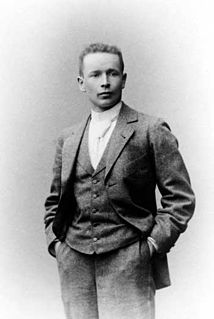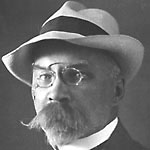 W
WLucien Georges Bazor (1889–1974) was Chief Engraver at the Paris mint from 1930 to 1958. He was born in Paris in 1889 and initially studied under his father, Albert Bazor. Bazor later became the pupil of Patey at the École nationale supérieure des Beaux-Arts. He won the Grand Prix de Rome in 1923 for his engraving.
 W
WBradbury Wilkinson & Co were an English engraver and printer of banknotes, postage stamps and share certificates.
 W
WAlfred-Henri Bramtot was a 19th-century French painter.
 W
WEugène Burnand was a prolific Swiss painter and illustrator from Moudon, Switzerland. Born of prosperous parents who taught him to appreciate art and the countryside, he first trained as an architect but quickly realised his vocation was painting. He studied art in Geneva and Paris then settled in Versailles. In the course of his life he travelled widely and lived at various times in Florence, Montpellier, Seppey (Moudon) and Neuchâtel. His later years were spent in Paris where he died a celebrated and well respected artist both in Switzerland and France. He was primarily a realist painter of nature. Most of his works were of rural scenes, often with animals, the depiction of which he was a master. He increasingly painted human figures and by the end of his career could be called a portraitist whose skill revealing character was profound.
 W
WAdolf Iosifovich Charlemagne, or Sharleman was a Russian painter of historical, genre and battle scenes. He was also the creator of a popular design for playing cards known as the "Satin Deck".
 W
WEdoardo Chiossone was an Italian engraver and painter, noted for his work as a foreign advisor to Meiji period Japan, and for his collection of Japanese art. He designed the first Japanese bank notes.
 W
WArthur Eisenmenger was a German former chief graphic designer for the European Community.
 W
WHans Erni was a Swiss graphic designer, painter, illustrator, engraver and sculptor.
 W
WÉmile Friant was a French artist.
 W
WLeonard Douglas Fryer was a British artist and designer. The son of a steel engraver, he worked for the printers Waterlow and Sons, preparing proposed designs for material to be produced by the firm such as stamps and banknotes. In 2019, a collection of his watercolour paintings for stamp and banknote designs was sold at auction after being found in a wardrobe 40 years after his death.
 W
WFerdinand Hodler was one of the best-known Swiss painters of the nineteenth century. His early works were portraits, landscapes, and genre paintings in a realistic style. Later, he adopted a personal form of symbolism which he called "parallelism".
 W
WCaptain John Hull was the Treasurer and mintmaster of the Massachusetts Bay Colony. Hull was born in Market Harborough, Leicestershire, England. He married Judith Quincy (1626–1695), daughter of Judith Pares and Edmund Quincy, progenitors of the prestigious Quincy family. His nephew, Daniel Quincy (1651–1690) was an apprentice to Hull. Daniel Quincy was great grandfather to Abigail Smith Adams; first Second Lady of the United States and the second First Lady of the United States.
 W
WOldřich Kulhánek was a Czech painter, graphic designer, illustrator, stage designer and pedagogue. Kulhánek created the design for the current Czech banknotes and postage stamps.
 W
WSir Edgar Bertram Mackennal, usually known as Bertram Mackennal, was an Australian sculptor and medallist, most famous for designing the coinage and stamps bearing the likeness of George V. He signed his work "BM".
 W
WLuc-Olivier Merson was a French academic painter and illustrator also known for his postage stamp and currency designs.
 W
WCharles Percier was a neoclassical French architect, interior decorator and designer, who worked in a close partnership with Pierre François Léonard Fontaine, originally his friend from student days. For work undertaken from 1794 onward, trying to ascribe conceptions or details to one or other of them is fruitless; it is impossible to disentangle their cooperative efforts in this fashion. Together, Percier and Fontaine were inventors and major proponents of the rich, grand, consciously-archaeological versions of neoclassicism we recognise as Directoire style and Empire style.
 W
WRoger Pfund is a Swiss graphic artist.
 W
WEugène Robert Poughéon born in Paris, was a French artist, painter, illustrator and museum curator.
 W
WGottlieb Eliel Saarinen was a Finnish-American architect known for his work with art nouveau buildings in the early years of the 20th century. He was also the father of famed architect Eero Saarinen.
 W
WHenri Clément Serveau, also known as Clément-Serveau, was a French painter, designer, engraver and illustrator. Clément-Serveau produced works in a realist manner early on, but soon became interested in the new movements. He was influenced by his friend Louis Marcoussis and experimented with Cubism, utilising geometric patterns to give the illusion of form and space. Later in his career he turned toward abstraction with a post-cubist stance. He designed banknotes for the Banque de France and produced large murals and participated in numerous French and international exhibitions.
 W
WAnthony Smith is a British sculptor who works in bronze. He is known for his wildlife sculptures as well as his depictions of well-known figures, including Charles Darwin, Ian Fleming, and Alfred Russel Wallace. He has been awarded major public commissions including the design of a new £2 coin for the Royal Mint, the first new statue for London's Natural History Museum in more than eighty years, and a life-sized statue of Charles Darwin for Christ's College, Cambridge. In addition to his sculpting work, he is also a photographer, specialising in wildlife photography.
 W
WGheorge Vrabie was a Moldovan artist, the author of the Coat of arms of the Republic of Moldova and of the Flag of the Chișinău Municipality, of the national currency for which he was named the "Father of the Moldovan leu". From 1962 to 1967 he studied at the "Ilya Repin" State Academic Institute of Fine Arts, Sculpture and Architecture from Saint Petersburg. In 1961 was his debut. It has illustrated over the years several volumes of Roman and universal literature. The artist's interest turned to such authors as Mihai Eminescu, Ion Druță, Grigore Vieru, Dante, Longus, Paul Valéry. The books’ graphics by Gheorghe Vrabie are distinguished by line intensity, accuracy and fine execution.
 W
WOtte Wallish (1903–1977) was a Czech emigre to Israel who established himself as a graphic designer and contributed to the symbolic self-representation of the Jewish state.
 W
WEmil Rudolf Weiß, or Weiss, was a German painter, typographer, graphic artist and poet.
 W
WTapio Veli Ilmari Wirkkala was a Finnish designer and sculptor, a major figure of post-war design.
 W
WRihards Zariņš was a prominent Latvian graphic artist.